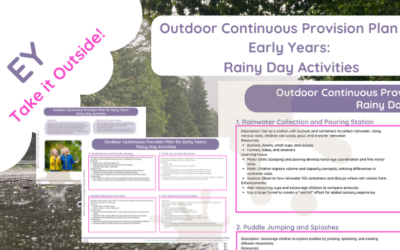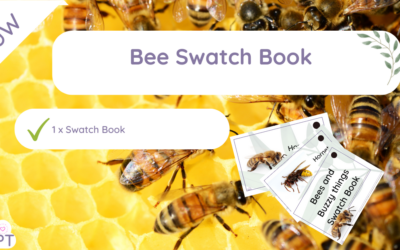Introducing the Outdoor Learning Colour Scavenger Hunt—a vibrant and engaging activity designed to captivate...
Outdoor Learning Scavenger Hunt (Toddlers)
Apr 4, 2025
Outdoor Learning Scavenger Hunt (Toddlers)Big discoveries for little explorers! Introduce your toddler to the wonders...
Outdoor Learning Scavenger Hunt
Apr 4, 2025
Outdoor Learning Scavenger HuntExplore nature. Spark curiosity. Learn through play. Take learning beyond the classroom...
Bug Outdoor Learning Scavenger Sheet
Apr 4, 2025
Outdoor Learning Scavenger Hunt Tick SheetInspire curiosity. Explore the outdoors. Learn through play. Make outdoor...
50 Outdoor Christmas Activities Early Years
Nov 21, 2024
Transform your festive season into a magical outdoor adventure with 50 Outdoor Christmas Activities for Early Years!...
Lanyard Challenges Sand Area (Underwater Theme)
Nov 13, 2024
Product Description: Lanyard Challenges Sand Area (Underwater Theme) Dive into a world of imagination with the Lanyard...
Outdoor Continuous Provision Plan for Early Years: Rainy Day Activities
Nov 8, 2024
Product Description: Outdoor Continuous Provision Plan for Early Years – Rainy Day Activities Turn rainy days into...
Rainy Day Ideas Early Years – Confidence Theme (Rope Method)
Nov 7, 2024
Rainy Day Ideas for Early Years - Confidence Theme (Rope Method) Using the Muddy Puddle Teacher Approach Turn rainy...
Spring Flowers Magnifying Glass
Apr 29, 2024
What does this resource include? 1 x Magnifying Glass How can I use this resource? Use Spring Flowers Magnifying...
My Wild Bug Book
Mar 28, 2024
What does this resource include? 7 x outdoor activities How can I use this resource? Use 'My Wild Bug Book' to learn...
My Wild Easter Activity Book
Mar 28, 2024
What does this resource include? 6 x outdoor activities 1 x pack per child How can I use this resource? Use My Wild...
My Wild Spring Book
Mar 28, 2024
What does this resource include? 6 x Art Activities using natural materials, completed outdoors. 1 x Book per child...
My Wild Easter Book
Mar 28, 2024
What does this resource include? 6 x Outdoor Art Activities 1 x book per child How can I use this resource? Use My...
Chinese Rock Dragon
Jan 8, 2024
What does Chinese Rock Dragon include? Are you joining in with Chinese New Year? Use this creative idea to create a...
Bee Swatch Book
Jun 20, 2023
What does the Bee Swatch Book include? Instruction into how to use your muddy frame 1 x Outdoor Art Frame How can I...
Minibeast Swatch Book
Jun 20, 2023
What does this resource include? 1 x Swatch Book How can I use this resource? Hang up in your outdoor area and let...
Minibeast magnifying glasses
Apr 24, 2023
What does this resource include? One magnifying glass with a picture front and words on the back. How can I use this...
Tree Swatch Book
Apr 24, 2023
What does this resource include? 12 x Tree swatch cards of typical trees found in the UK How can I use this resource? ...
New In

Forest School Story-Linked Lesson Ideas

Whirlpool Lesson Ideas – SEND Pack

Tornado Lesson Pack for SEND

All About Me Lesson Ideas

Lunar New Year Outdoor Arts Pack

Bottle Greenhouse Instructions

Blank Outdoor Lanyard Template

Outdoor Learning Assessment Grid

Nelson Mandela KS1 (Outdoor Lesson Ideas)




















